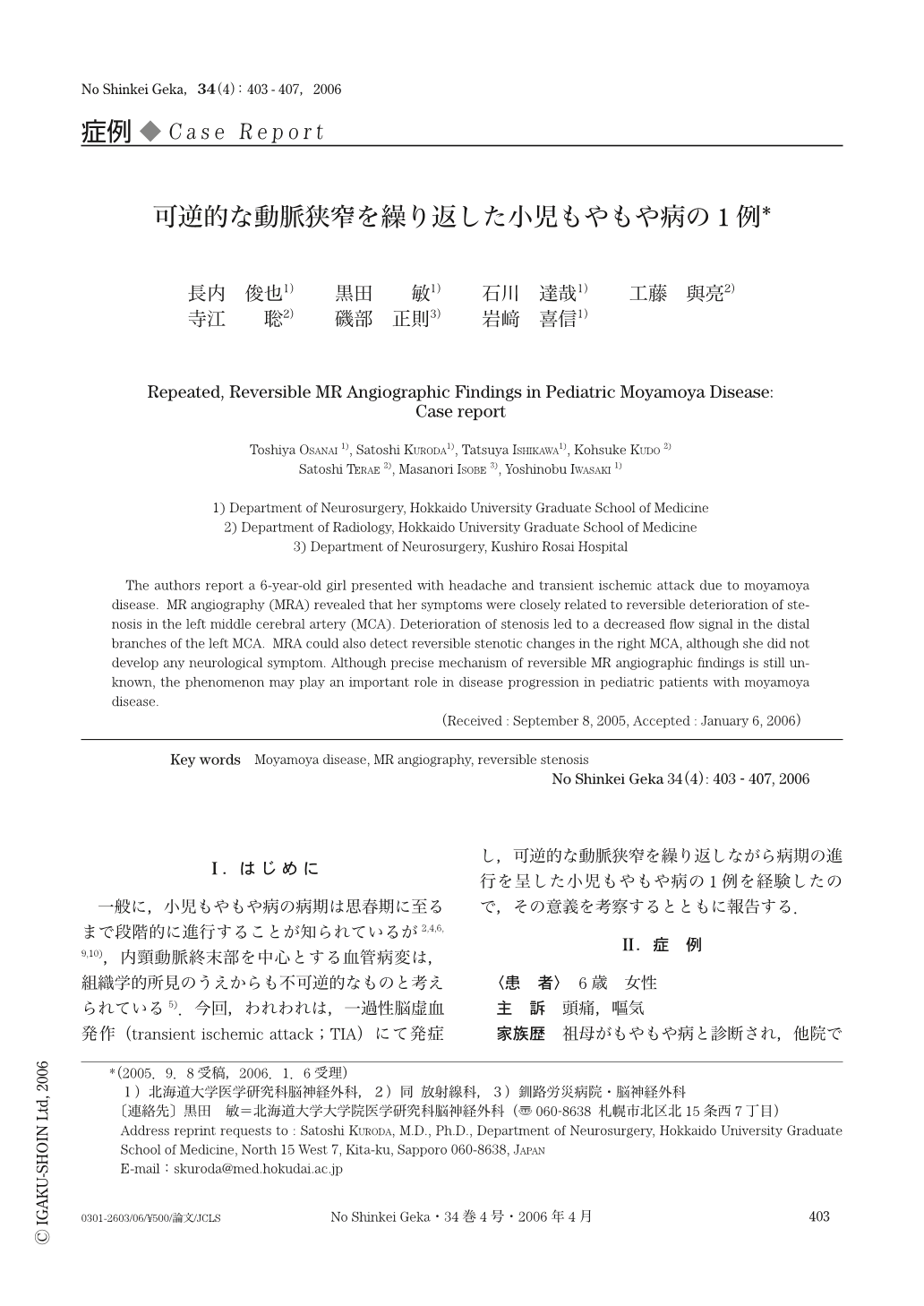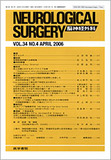Japanese
English
- 有料閲覧
- Abstract 文献概要
- 1ページ目 Look Inside
- 参考文献 Reference
Ⅰ.は じ め に
一般に,小児もやもや病の病期は思春期に至るまで段階的に進行することが知られているが2,4,6, 9,10),内頸動脈終末部を中心とする血管病変は,組織学的所見のうえからも不可逆的なものと考えられている5).今回,われわれは,一過性脳虚血発作(transient ischemic attack;TIA)にて発症し,可逆的な動脈狭窄を繰り返しながら病期の進行を呈した小児もやもや病の1例を経験したので,その意義を考察するとともに報告する.
The authors report a 6-year-old girl presented with headache and transient ischemic attack due to moyamoya disease. MR angiography (MRA) revealed that her symptoms were closely related to reversible deterioration of stenosis in the left middle cerebral artery (MCA). Deterioration of stenosis led to a decreased flow signal in the distal branches of the left MCA. MRA could also detect reversible stenotic changes in the right MCA,although she did not develop any neurological symptom. Although precise mechanism of reversible MR angiographic findings is still unknown,the phenomenon may play an important role in disease progression in pediatric patients with moyamoya disease.

Copyright © 2006, Igaku-Shoin Ltd. All rights reserved.


